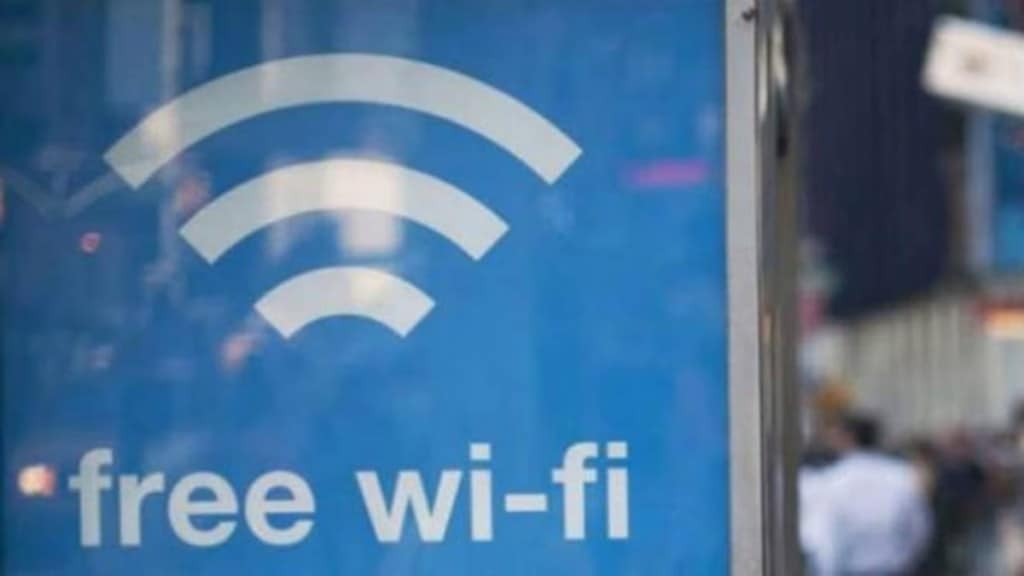By TV Ramachandran
Imagine an average Indian traveller in Japan or Korea. He or she may cherish the memories of the stunning landscape and the remarkable people, but oftentimes, one experience that will stand out is the seamless, high-speed internet connectivity in public areas, regardless of the SIM card plan. This is the power of reliable public Wi-Fi. While tourists may enjoy this luxury temporarily, millions of under-connected Indians rely solely on daily mobile data, budgeting it like rations, just to watch a video or connect on a video call with their loved ones.
In India, the globally unique Prime Minister’s Wi-Fi Access Network Interface (PM-WANI) initiative, launched in December 2020 PM Narendra Modi, is designed to accelerate the proliferation of public Wi-Fi hotspots to create robust, secure, and user-friendly digital communication infrastructure and bridge the digital divide in India, especially in suburban and rural areas. Unlike many developed countries and comparable economies, which have both extensive mobile and numerous fixed broadband networks as well as countless public Wi-Fi hotspots, India has primarily relied on mobile data for high-speed internet access. This reliance on mobile data can be costly and limiting, especially for those who need more consistent and reliable quality and/or the need to download large files or videos. Public Wi-Fi hotspots can provide a valuable alternative, allowing individuals to access reliable and consistent internet without incurring additional mobile data charges.
To recount the basics, public Wi-Fi initiatives like PM-WANI rely on a broadband connection at the public data office (PDO) level. Such connections can only be provided by a limited group of large mobile and internet operators. Understandably, such operators would try to crush the tiny fledgling Wi-Fi players by imposing exorbitant connectivity charges on them. It is such situations that impact the consumer and one looks to the regulator and policymakers to step in and safeguard consumer interest and fair competition. And, in India, they have intervened and are trying to correct the situation.
Following a reference from department of telecommunications (DoT), the Telecom Regulatory Authority of India (Trai) had consultations and then brought out a draft telecommunications tariff order which proposes very reasonably that PDOs (that is, the public Wi-Fi hotspots) should be provided broadband connectivity at the home broadband tariff and not higher. This would be a great facilitator for PM-WANI and public interest.
It is well known that mobile internet services face inherent limitations due to network topology, user density, spectrum propagation, device capabilities, and varying service quality. These constraints hinder mobile services from achieving the same level of quality, consistency, and reliability as fixed broadband with Wi-Fi connections. PM-WANI is a powerful catalyst for the growth of public Wi-Fi and thereby ubiquitous broadband availability.
However, India’s current fixed broadband deployment cannot keep pace with the exploding demand for data. With fixed broadband data usage globally reaching 20 to 30 times that of mobile data per capita, we need a minimum 20% annual growth rate in fixed broadband subscriptions over the next six years to reach just 100 million additional fibre connections. To achieve this ambitious target, leveraging the vast network of over 80,000 local cable operators, over 5,500 public data office aggregators (PDOAs) and PDOs, and over 1,000 smaller internet service providers (ISPs) is essential.
Further, as stated above, the Union Cabinet approved PM-WANI in 2020 after extensive consultations and Trai’s recommendations on public open Wi-Fi architecture. The claim by a few telcos that PM-WANI is outdated due to the proliferation of 4G and 5G services is incorrect and misleading. The slow adoption of PM-WANI is primarily due to the exorbitant internet bandwidth charges imposed by telcos and ISPs on PDOs.
In another positive move, the DoT recently introduced significant amendments to the PM-WANI framework, aimed at facilitating widespread adoption of public Wi-Fi. These changes address key barriers faced by PDOs in establishing and operating Wi-Fi hotspots. Previously, PDOs were required to enter into commercial agreements with telcos/ISPs for internet connectivity, often at exorbitant rates. The amendments eliminate this requirement, allowing PDOs to avail of regular internet connectivity via PDOAs without any need for a commercial agreement directly with the TSPs. Another amendment allowed PDOs to leverage their existing home or office Wi-Fi access points to establish public hotspots. By configuring a second service set identifier and integrating it with a registered PDOA, PDOs can utilise surplus bandwidth to provide public Wi-Fi services. This will significantly boost the availability of public Wi-Fi, benefitting end users and consumers. These amendments address a major obstacle that restricted the proliferation of public Wi-Fi.
PM-WANI and similar schemes are crucial for opening up and democratising the telecommunications sector. To ensure their success, public awareness, small enterprise support, and government/regulator assistance are vital.
Public Wi-Fi is not merely a convenience, it’s a necessity for bridging the digital divide. To realise the PM’s vision of “Digital India” with digital empowerment for all, including the most marginalised, PM-WANI and the proliferation of public Wi-Fi hotspots are indispensable. This is a UPI moment for India, waiting to be found.
With research inputs by Mira Swaminathan, BIF.
The author is the president, Broadband India Forum.
Disclaimer: Views expressed are personal and do not reflect the official position or policy of FinancialExpress.com. Reproducing this content without permission is prohibited.

